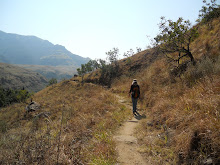Another litoverlap:
When I first encountered the Willamette I had no idea it was a river in the United States; the name was simply interesting and unusual. On the one hand, it brought to mind a kind of cloth that hard-working homemakers might have found revolutionary in the 1960s, while on the other it reminded me of my friend Will, and how long it has been since we’ve met.
In Jessica Grant’s Come, Thou Tortoise (2010, Old Street), Chuck holds Winnifred in his open palm at his apartment window, and says, ‘Doesn’t the Willamette look inviting?’ (p 122). Winnifred is the diminutive tortoise of the book’s title. Chuck’s girlfriend has agreed to look after her while her owner and the book’s protagonist, Audrey Flowers, goes home to St John’s, Newfoundland to be with her comatose father. As an out of work actor Chuck has a lot of spare time, and he doesn’t really know what to do with a tortoise. Winnifred is nervous about his preoccupation with the river; she wonders ‘how long before he decides the tortoise is better off in her “natural” habitat’ (p 157). But in the end Chuck grows quite fond of her and the Willamette pretty much fades from the story.
When I first encountered the Willamette I had no idea it was a river in the United States; the name was simply interesting and unusual. On the one hand, it brought to mind a kind of cloth that hard-working homemakers might have found revolutionary in the 1960s, while on the other it reminded me of my friend Will, and how long it has been since we’ve met.
In Jessica Grant’s Come, Thou Tortoise (2010, Old Street), Chuck holds Winnifred in his open palm at his apartment window, and says, ‘Doesn’t the Willamette look inviting?’ (p 122). Winnifred is the diminutive tortoise of the book’s title. Chuck’s girlfriend has agreed to look after her while her owner and the book’s protagonist, Audrey Flowers, goes home to St John’s, Newfoundland to be with her comatose father. As an out of work actor Chuck has a lot of spare time, and he doesn’t really know what to do with a tortoise. Winnifred is nervous about his preoccupation with the river; she wonders ‘how long before he decides the tortoise is better off in her “natural” habitat’ (p 157). But in the end Chuck grows quite fond of her and the Willamette pretty much fades from the story.
 1. Washington 2. Columbia River 3. Idaho 4. Nevada 5. California 6. Pacific Ocean 7. Oregon 8. Willamette Basin, through which runs the Willamette River
1. Washington 2. Columbia River 3. Idaho 4. Nevada 5. California 6. Pacific Ocean 7. Oregon 8. Willamette Basin, through which runs the Willamette River The name felt like an old acquaintance when it appeared again in The Jump-Off Creek (1989, Boston: Houghton Mifflin), Molly Gloss’s tale about a pioneering ‘westering woman’, Lydia Bennett Sanderson, who sets up home by herself on a smallish piece of Oregon land. In the late 19th century, the Willamette’s valleys are ‘gentler’ than the nearby Blue Mountains (p 69), but the strapped Sanderson must make her bleak new home in the latter area because Willamette country is by that time already ‘thickly settled’ and the price of the land is ‘very dear’ (p 106).
Now, in Winnifred and Audrey’s time, the Willamette seems to have a tendency to flood, and it’s the last remaining place on Earth where American Indians of the Pacific Northwest can find one of their food staples: the jawless, eel-like lamprey.


